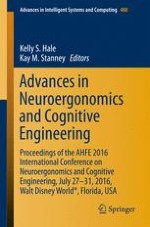2017 | OriginalPaper | Buchkapitel
Transcranial Direct Current Stimulation (tDCS) Versus Caffeine to Sustain Wakefulness at Night When Dosing at Start-of-Shift
verfasst von : Lindsey McIntire, R. Andy McKinley, Justin Nelson, Chuck Goodyear
Erschienen in: Advances in Neuroergonomics and Cognitive Engineering
Aktivieren Sie unsere intelligente Suche, um passende Fachinhalte oder Patente zu finden.
Wählen Sie Textabschnitte aus um mit Künstlicher Intelligenz passenden Patente zu finden. powered by
Markieren Sie Textabschnitte, um KI-gestützt weitere passende Inhalte zu finden. powered by
